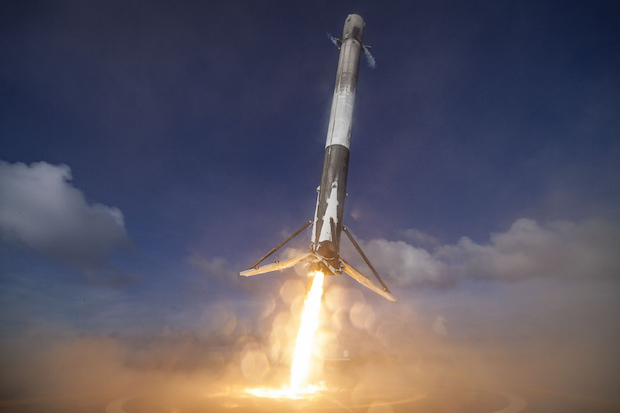Space Exploration Technologies Corp. or SpaceX, has successfully launched its third reused rocket. This marks another step in Elon Musk’s company’s journey towards bringing down the cost of rocket flight.
The company’s 15th launch this year, from the Kennedy Space Center in Florida, had a payload for EchoStar Corp. and SES SA, a high-powered communications satellite that will be deployed to a geostationary transfer orbit above earth.
The reusability factor has been derided as a “crazy idea” by many, but Musk’s SpaceX has once again proved that rocket components can be reused to dramatically cut down the cost of sending hardware into orbit. The rocket’s first stage was successfully maneuvered into landing on a drone ship built for the purpose, somewhere in the Atlantic Ocean.
The rocket launched Wednesday was previously used in a resupply trip to the International Space Station earlier this year. It will be used for another launch in the future.
SpaceX’s target is to complete at least 20 missions this year, with an upper-end goal of 24. An earlier launch this week carried another satellite, but for Iridium Communications Inc. The launch was successfully executed on Monday from California’s Vandenberg Air Force Base.
Another launch is scheduled towards the end of October, which will take its total missions up to 16. That means only another 4 launches to meet its base target of 20 missions for 2017.
To say that SpaceX is a revolutionary company would be an understatement. One of its objectives is to make space flight far more affordable than it is today. To that end, the company believes that the more components that are reused from previous flights, the cheaper space travel will become.
The real breakthrough will happen only when a launched rocket can be brought back safely and fully reused on its next flight. That’s never been done before, but SpaceX’s efforts are taking us ever-closer to that ultimate objective. When that happens, Musk says, “the cost of access to space will be reduced by as much as a factor of a hundred.”
In March 2017, SpaceX achieved a major milestone towards that goal: it achieved the very first reflight of an orbital class rocket that the world has ever seen. The first stage of the rocket was previously used in a resupply launch for NASA, for transporting space station cargo.
Rockets are generally designed to burn up on reentry, but not the ones built by SpaceX. The cost of a commercial jet liner is about the same as that of the Falcon X, and an airplane is often used several times a day and handles tens of thousands of flights during its lifetime. This is the angle SpaceX is going after to make space travel a hundred times cheaper than it is now.
The real cost in space flight is building rockets for one-time use. If that challenge can be overcome, space travel for the average human could come as quickly as within our lifetimes.
Thanks for visiting. Please support 1redDrop on social media: Facebook | Twitter



